




To coincide with The Council for British Archaeology’s Festival of Archaeology (15-30 July), there will be two events where you can find out more about our work on the Central Winchester Regeneration site.
ONLINE: Wednesday 26 July at 2pm on Teams – PCA will join the CWR Archaeology Panel to discuss the project, joined by Keith Wilkinson from the University of Winchester who will have a radiocarbon dating update. There will be a panel discussion and the opportunity to ask questions.
Watch the presentation and Q&A here
IN PERSON: Saturday 29 July – Join us for guided tours of Trench 1 (next to Coitbury House). The tours will start and finish at our stall in Abbey Gardens and attendees will get a chance to view some of the finds from the excavation. Meet at the PCA Gazebo in Abbey Gardens anytime between 10am and 1pm.
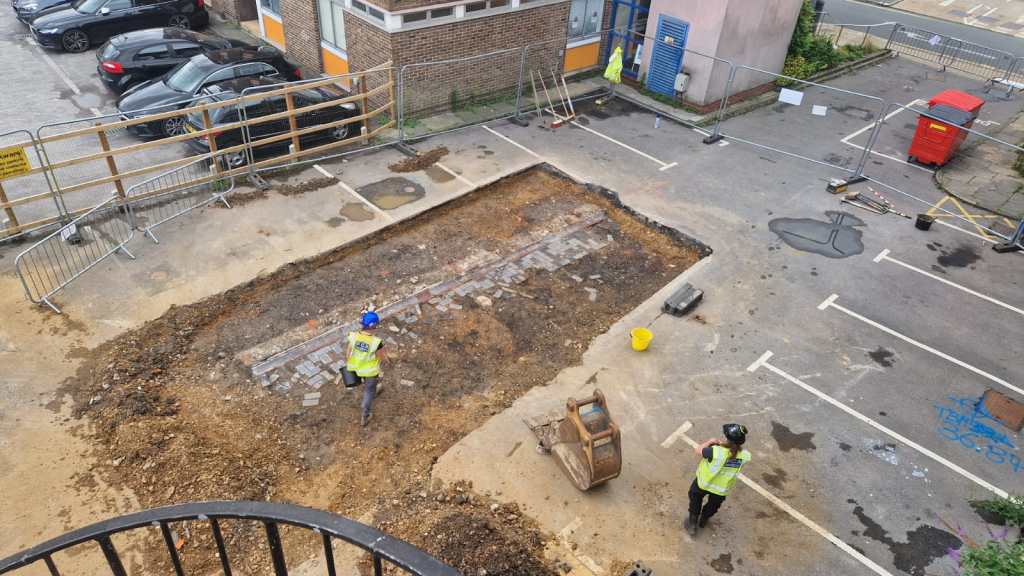

The Central Winchester Regeneration site has come alive! Work began on Monday 17th July with excavation in the car park next to St Clement’s surgery on Tanner Street. The site has been buzzing with the arrival of fencing and equipment, including the ‘Big Orange Trowel’. A start has been made on Trench 1 next to Coitbury House, with the asphalt and modern layers removed under the watchful eye of Shane Maher.
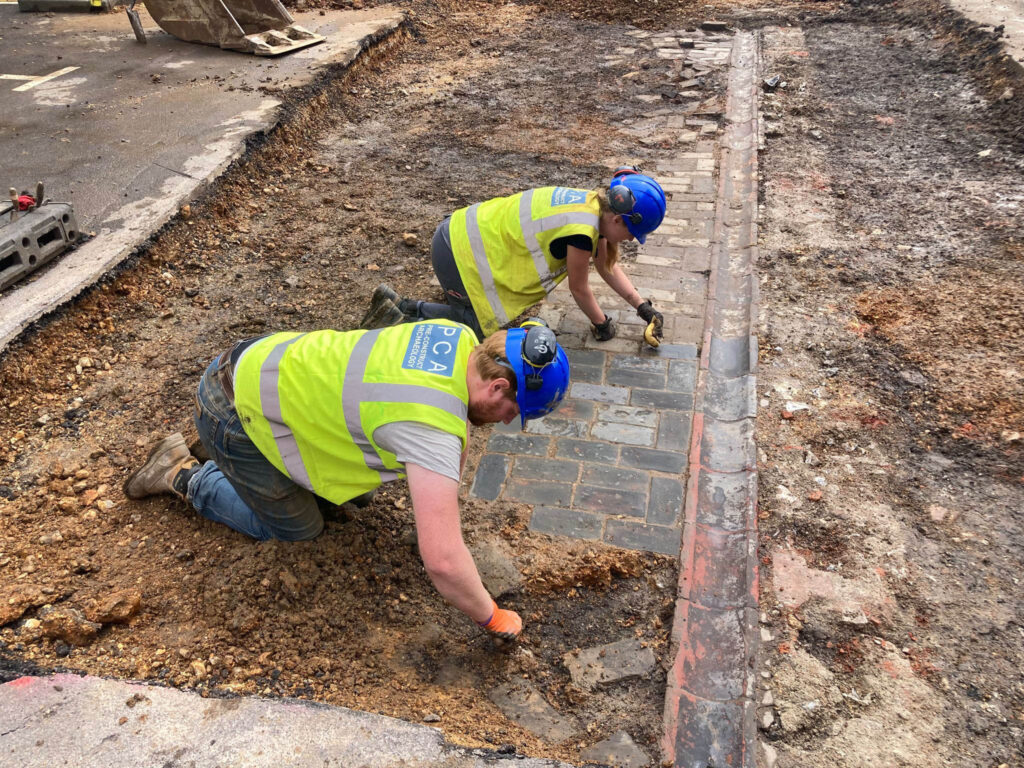
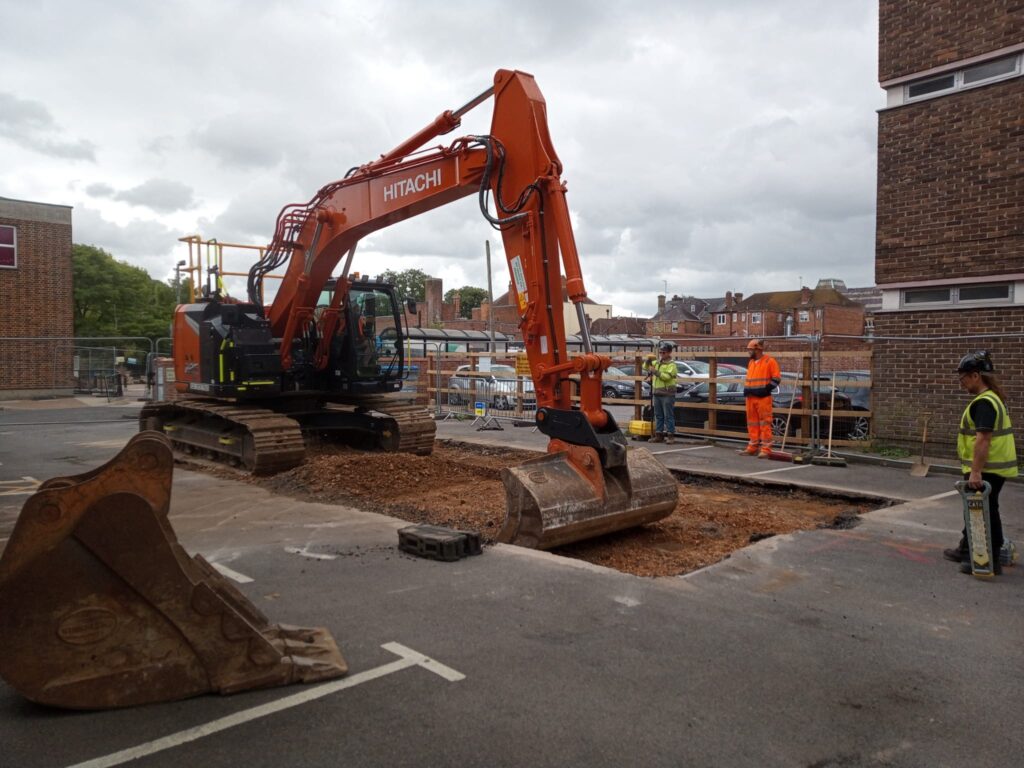

This revealed a section of what we think is an alleyway that ran behind the gardens of a terrace called Forder’s Buildings, which is first shown on the 1st Ordnance Survey map of 1871 and on maps up to the 1960s, when the winds of change swept away remnants of Victorian housing from the heart of the city.
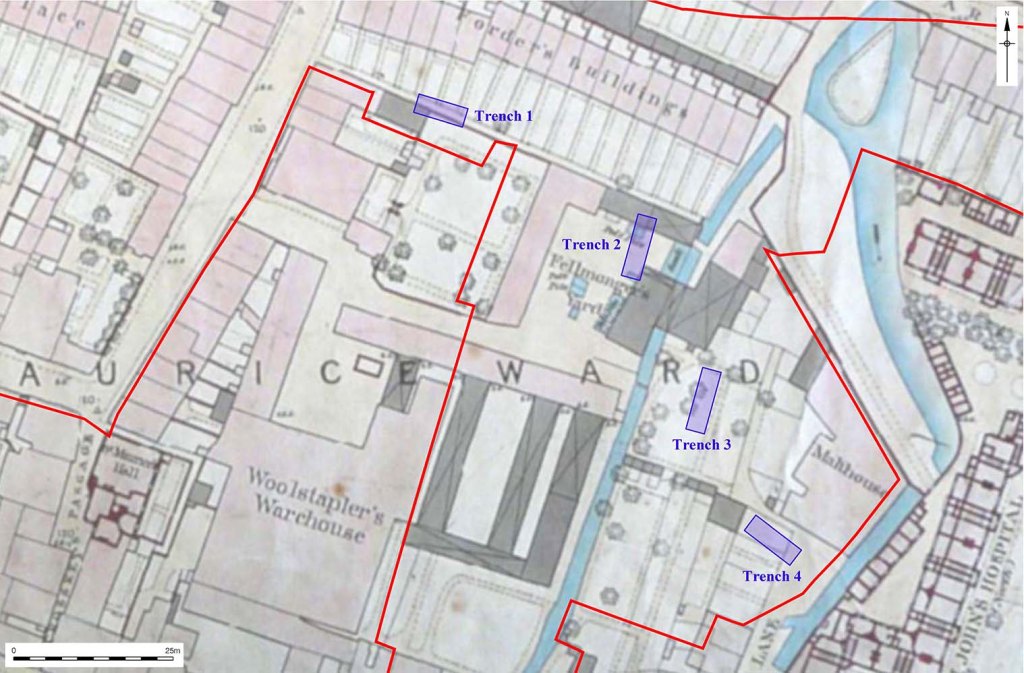
We will be welcoming volunteers on Wednesdays and Thursdays to help process finds from our excavations at the Central Winchester Regeneration site.
Wednesday will be Environmental processing at the University of Winchester; Thursday will be finds processing at the PCA Winchester office.
Use this form to book your place, please provide any relevant information, such as disabilities or other abilities, that would contribute to your volunteering experience. Once booking has been made, you will receive an email to the address used in the booking, which will include detailed instructions on location, timings, etc.

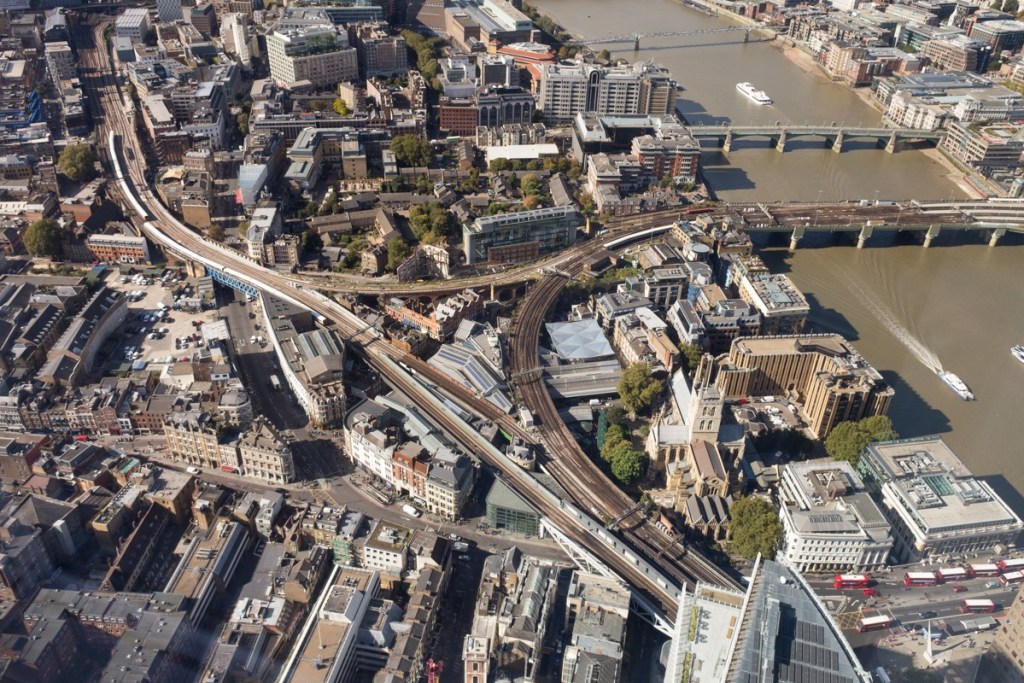
PCA Director Peter Moore will be leading an archaeological tour to celebrate the Festival of Archaeology this year, with CBA London, around Borough/London Bridge Station. This walk will take you on a time-travelling journey through this historically significant area.
Date and Time: Sunday, 23rd July at 3pm
Join him to explore the sites in this area, where archaeological excavations have uncovered evidence of 2000 years of occupation. Discover the remains of a Roman bath house, Saxon boundaries, a medieval hospital, and a rich post-medieval domestic and light industrial urban landscape.
Most of these sites are the result of joint excavations by Oxford Archaeology and Pre-Construct Archaeology as part of the Thameslink and London Bridge Station Improvement project, as well as other excavations conducted by Pre-Construct Archaeology and MoLA.
Booking is now open but only a few spaces remain!
If you have queries about the event, contact becky.wallower@dial.pipex.com
This year’s Festival of Archaeology runs from 15th to 30th July.


We are delighted to announce our involvement in the Central Winchester Regeneration Project, as detailed in Winchester City Council’s press-release.
The development site is a potential archaeological goldmine with the possibility to address a number of current objectives in research into all periods of the city’s past.
.
Our investigation will comprise four trenches in what is now the bus station, in the north-eastern part of the historic core of Winchester. The trenches target a deep, well-preserved waterlogged archaeological sequence (demonstrated by geoarchaeological boreholes) and aims to inform development proposals for CWR that have yet to be drawn up. In fact, the archaeology will drive and inform the development proposals, and it is intended, longer term, to preserve as much of the archaeological sequence as possible.
What we expect to find is evidence of the Roman, Anglo-Saxon, medieval and post-medieval town – a classic urban archaeological sequence. As the water table in this area is unusually high, around 1.6m BGL, the site has the added potential of exceptional preservation of organic artefacts and palaeoenvironmental material which will provide invaluable insights… but this will also pose intriguing challenges!
On 26 July PCA will be joined by the CWR Archaeology Panel in an online event to share details of the programme, the purpose of the work and what’s been happening so far. We will provide regular social media updates and intend to hold open days on site.
The first public open day will be on Saturday 29th July.
Cllr Martin Tod, Leader of Winchester City Council, (pictured above right, with Paul McCulloch and Tracy Matthews, Historic Environment Officer) says:
“I’m incredibly excited to see this work starting. Our city has such a rich record of its history and there’s been brilliant archaeological work over the years too – but there’s still so much more to learn. I know many of us share a strong interest in our city’s past and so I am delighted that PCA’s community event programme will give people the chance to find out more about the work they’re doing and this relatively under-researched part of Winchester.
But while many of us are fascinated by our past, we also must look to our future. These works also take us one step further towards regenerating one of the most rundown parts of our city – but doing so that reflects our pride in our city’s heritage and history.”
Paul McCulloch, PCA Winchester Regional Manager says:
“We are delighted to be able to assist the Council in finding out about the archaeology of the CWR site and in providing information that will help toward its redevelopment. The site offers a special archaeological opportunity to investigate well-preserved remains of Winchester’s Roman, Anglo-Saxon, medieval and more recent past that can be used to help in the design and setting of its regeneration.”


Katie from PCA Durham is currently on secondment at Birdoswald Roman Fort on Hadrian’s Wall, at a Historic England and Newcastle University training programme for Archaeology students. Katie is helping supervise the digging and finds processing and will be there until the end of the season on 7th July.
This year they’re digging to the east of the fort (the bathhouse), to north of the fort and Hadrian’s Wall (lots of industrial and domestic activity there), and in the unknown territory west of the fort. All exciting stuff!
This fantastic Roman finger ring with intaglio (which may show the god Mars) came up the first day of opening a trench! Tours of the fort and excavations will take place Monday to Friday 11am and 2pm from June 13 until 7th July.
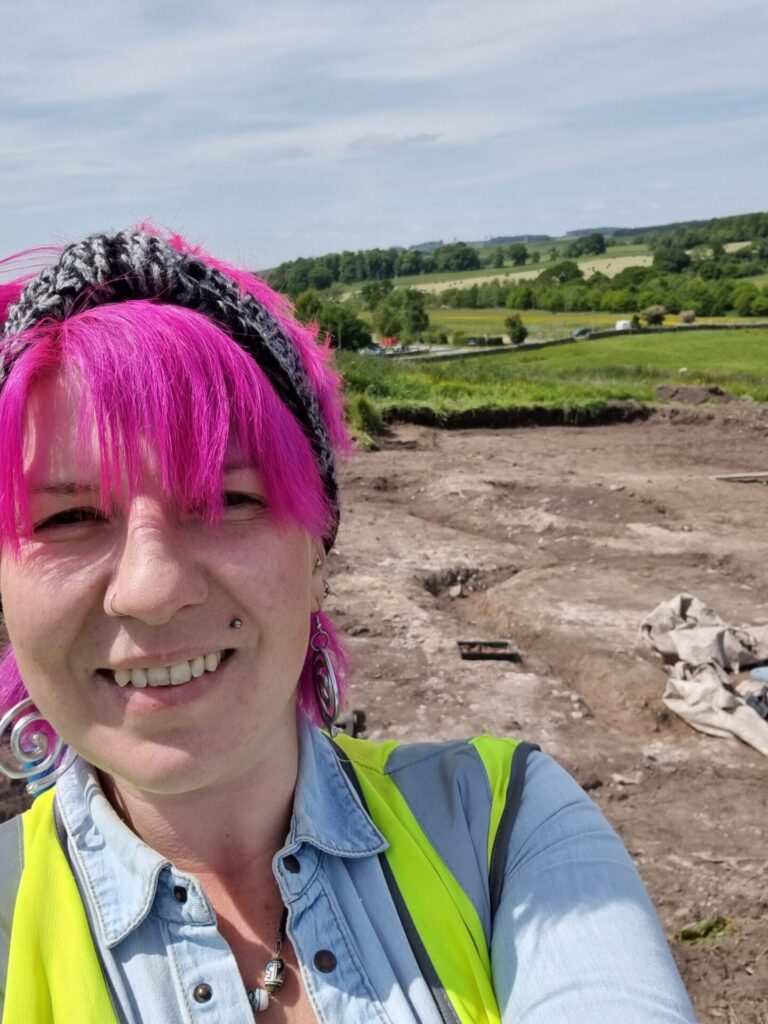


Ireneo Grosso presents his preliminary interpretations of recent PCA excavations between Coleman Street and Moorgate to the the LAMAS 59th Annual Conference of London Archaeologists.
This talk focuses on the main Roman structures and deposits recorded during our excavation in the City of London. During our mitigation work we unearthed evidence of two Roman roads, industrial activity (glass working), clay and timber buildings and one masonry building represented by a partially preserved opus signinum floor and a large quantity of painted plaster.


Scott Vance’s article on Turret 3a of Hadrian’s Wall is now out in the 400th edition of Current Archaeology.
In ‘Surprises from the Roman frontier: Excavating Hadrian’s Wall in urban Tyneside’ Scott details our investigations in the summer of 2021 which revealed not only the first turret to be uncovered along the Wall in over 40 years, but the largest example identified to date, together with other defensive features.
Click here to see Scott’s presentation to Current Archaeology Live! earlier this year